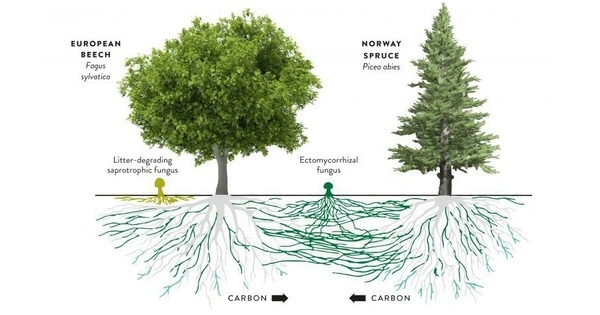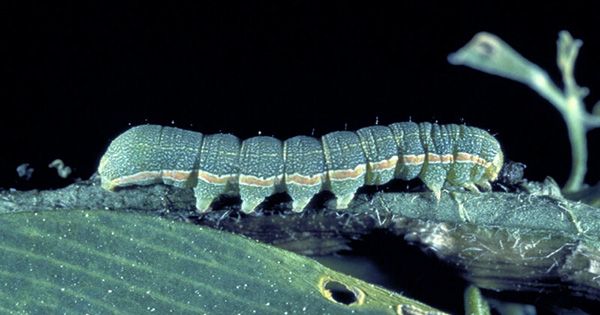Mycorrhizal networks are an intriguing aspect of the symbiotic interaction that exists between fungi and plant roots. A common mycorrhizal network (CMN) is an underground network found in forests and other plant communities that is formed by the hyphae of mycorrhizal fungi interacting with plant roots. They are complicated networks of hyphae, which are microscopic, thread-like filaments that make up a fungus’s main body.
Individual plants are linked together by this network. Mycorrhizal interactions are most typically mutualistic, with both partners benefiting, but they can also be commensal or parasitic, and a single partnership can switch between the three types of symbiosis at any moment. These networks generate a mutually beneficial relationship between fungi and plant roots. This association is known as mycorrhiza.
These networks originate and evolve in response to environmental factors such as soil fertility, resource availability, host or mycosymbiont genotype, disturbance, and seasonal change. Some plant species, such as buckhorn plantain, a common lawn and agricultural weed, benefit from mycorrhizal associations when soil fertility is low, but are harmed when soil fertility is high. Plants and fungi can both associate with several symbiotic partners at the same time, and both are capable of allocating resources preferentially to one partner over another.
There are two main types of mycorrhizal networks:
- Ectomycorrhizal (ECM) networks: These are usually linked with trees, where the fungal hyphae form a sheath around the roots, reaching into the soil but without piercing the root cells. They aid in the absorption of nutrients from the soil, notably phosphorus and nitrogen, boosting the tree’s overall growth and development.
- Arbuscular mycorrhizal (AM) networks: These are more typically found in herbaceous plants and crops, where the fungal hyphae penetrate the root cells and create complex structures known as arbuscules. These structures allow nutrient exchange between the plant and the fungus, resulting in better water and mineral uptake.
Mycorrhizal networks are essential for improving plant resilience and overall ecosystem health. They promote the movement of nutrients, water, and even chemical messages between plants, resulting in the formation of a network that serves the entire plant community. This network has been demonstrated to boost plant tolerance to pathogens and environmental stressors, making it an essential component of sustainable agricultural and forestry operations.
Mycorrhizal networks are being studied by scientists and researchers in order to better understand their potential applications in agriculture, forestry, and ecosystem restoration. Using the power of these networks could result in more sustainable and efficient agriculture techniques, less reliance on synthetic fertilizers, and enhanced plant community resistance to diverse environmental problems.
















